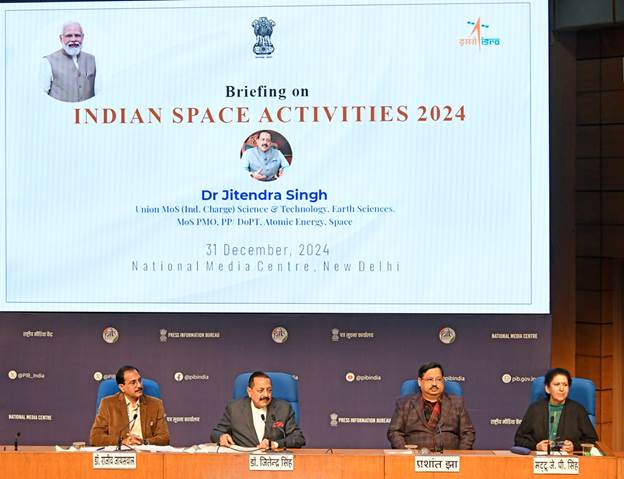ISRO Achieves Milestone with Space Docking Experiment (SPADEX)
India has reached a significant milestone in space technology with the Space Docking Experiment (SpaDeX), placing the country alongside global leaders in this critical field. Union Minister Dr. Jitendra Singh announced the achievement following the successful launch of the PSLV-C60 rocket on 30 December from Sriharikota.
The SPADEX mission, which involves two small satellites, showcases ISRO’s ability to perform spacecraft rendezvous, docking, and undocking. These technologies are crucial for future advancements such as satellite servicing, space station operations, and interplanetary missions.

Objectives and Milestones of SPADEX
Dr. Singh outlined several key objectives of the SPADEX mission, including:
- Demonstrating spacecraft rendezvous and docking technology.
- Proving controllability in docked conditions to extend satellite lifespans.
- Testing power transfer capabilities between docked satellites.
Post-docking, the satellites will independently conduct payload operations. The docking process is scheduled for 7 January 2025, at noon.
Collaboration in Space Biology
Dr. Singh highlighted a groundbreaking collaboration between ISRO and the Department of Biotechnology to study biological responses in space environments. Under Prime Minister Narendra Modi’s leadership, this initiative aims to position India as a leader in Space-Biology, unlocking new insights into physiological changes in space.
Private Sector’s Role in India’s Space Boom
The Minister credited the 2023 New Space Policy for transforming India’s space sector. This policy has allowed private companies to contribute to ISRO’s activities, leading to an explosion of space startups—from fewer than 10 in 2021 to nearly 300 by 2023.
Key players include:
- AgniKul Cosmos, which built a private launchpad on ISRO premises.
- Skyroot Aerospace, which conducted India’s first private sub-orbital launch.
These startups bolster ISRO’s capabilities and attract global interest from giants like SpaceX.
Vision for India’s Space Future
Dr. Singh outlined an ambitious roadmap for India’s space programme:
- 2025: NAVIC advancements and the launch of a US satellite for mobile communication.
- 2026: Gaganyaan’s first crewed mission.
- 2035: Launch of India’s space station, Bharat Antariksh.
- 2047: First Indian astronaut to land on the moon.
The space economy, valued at $8.4 billion in 2023, is projected to grow to $44 billion by 2033, driven by private investments of ₹1,000 crore in 2023 alone.
Expanding Global Presence and Applications
India has become a major foreign exchange earner by offering satellite launch services to countries like the US, France, and Japan. Over 85% of the €220 million revenue from launching foreign satellites was generated in the last eight years.
Domestically, ISRO’s advancements are transforming agriculture, defence, infrastructure, and weather forecasting. Initiatives like Mission Mausam enhance resource management and disaster preparedness.
Dr. Singh concluded by expressing optimism: “Under Prime Minister Narendra Modi’s leadership, India’s space capabilities are at their peak, with unparalleled achievements on the horizon.”
“With inputs from Reuters”





